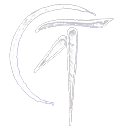If you are expecting harmless flower children or benign nature spirits, you are in mortal danger. The Victorians were familiar with the small flower pixies? and sprites, they boldly and openly used the term fairy to describe these creatures. Their ancestors knew better. Most of the true Fae were part of the Great Migration? to the land over the sea, and even the lesser and benevolent ones are dangerous creatures to encounter.
Attributes
Glamour
The one power that every Fae possesses is that of casting a glamour?. The name Fae originally comes from the enchantments they could cast. Most often this is used on themselves, to give the Fae beauty that is literally enchanting. Fae without glamour are often unexpectedly ugly, or at least rather plain, and breaking a Fae's glamour is likely to provoke retaliation.
Some lesser Fae can only manage to make themselves invisible, without otherwise changing their appearance. Invisibility is a feat that nearly every Fae can manage. Oddly, many of them seem to have an easier time becoming invisible outside of Elfheim. Perhaps the one of the beings there has an enchantment that counters weak glamours.
Shapeshifting
While commonly associated with the Fae, not all of them can change their shape, and of those who can it is often a limited ability. There are skinchangers? who put on seal-skins or swans, there are those who can use their glamour to create the illusion of change, and there are those dangerous beings who can shapeshift at will.
One theory about the dwindling of the Fae in the old world is connected with shapeshifting: there are Faeries who have the power to change their form at will, but at the cost of being a little smaller when they change back. Thus, the remaining Faeries dwindled to obscurity. But beware if you encounter a Fae taller than a man?.
Types of Fae
There are several different kinds of Fae. Though it can difficult to precisely categorize otherworldly creatures as diverse as the Underground Miners, the Sideways Men, or the Hulda, there are some broad types.

